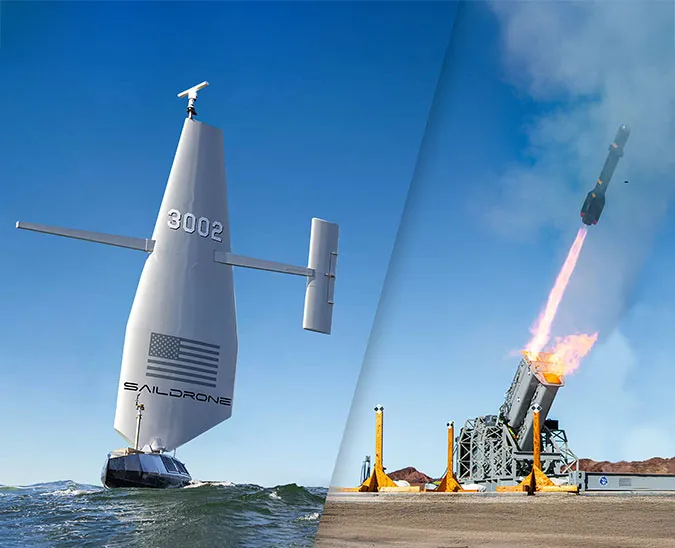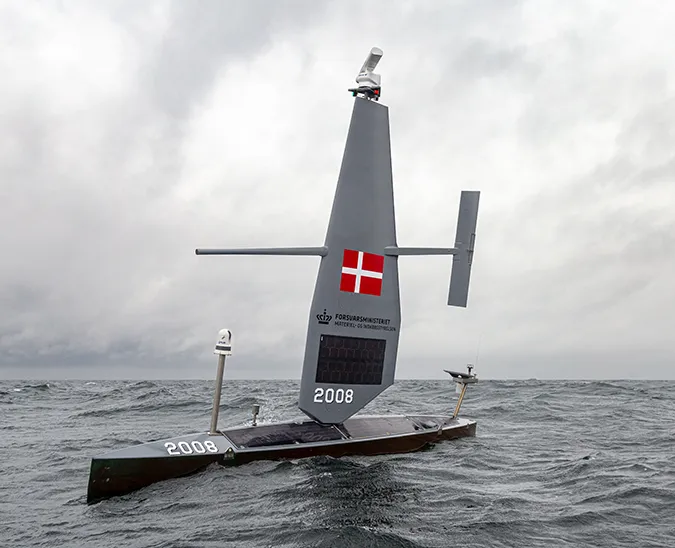Published on
Author
Imagine a car driving down the street: As it approaches, the sound made by its engine gains in pitch, once it passes by, the sound of the engine lowers in pitch. This is called the Doppler effect. The same principle can be applied to measure ocean currents with an Acoustic Doppler Current Profiler (ADCP), one of some 20 science sensors that Saildrone is using to collect meteorological and oceanographic data during the 2019 Antarctic Circumnavigation.

The ADCP affixed to the keel of a Saildrone unmanned surface vehicle (USV) emits a series of high-frequency pulses of sound. The sound pulses bounce off of moving particles in the ocean. If the particle is moving away from the instrument, a lower frequency signal is returned. If the particle is moving toward the instrument, a higher frequency signal is returned. Since the particles are moving at the same speed as the water, the ADCP can use the difference in sound frequency to determine the speed of the ocean current.
Ocean currents are critical to circulating heat around the Earth and moderating weather and climate. In the early days of ocean exploration, sailors planned routes according to the currents to minimize travel times similarly to how the modern shipping industry uses the currents to save fuel. Currents provide oxygen to fish and make distant migrations a little easier for sharks, seals, and whales.
Currents are driven by wind and solar energy, and also by the sinking and upwelling of water. Colder, saltier water is denser and therefore sinks into the deep ocean pushing fresher water up. Ocean currents don’t always flow at the same speed on the surface as they do several meters deep, and this makes them hard to characterize with satellites. The ADCP instruments installed on Saildrone USVs operate at 300kHz measuring water velocity and direction down to approximately 90 meters in the boundary (marine surface) layer where a significant portion of ocean heat is transported.
The Antarctic Circumpolar Current (ACC) flows clockwise from west to east around Antarctica and is the only current that circumnavigates the Earth. It is essential to circulating cooler water from the Southern Ocean northward into the Atlantic, Pacific, and Indian oceans. Changes to the normal circulation of the ACC could have global impacts.


ADCP instruments can be attached to a variety of vessels and buoys or to a fixed point on the ocean floor, but the Southern Ocean is extremely difficult and expensive to survey by ship due to the remoteness of the region and the regularity of violent storms. The depth of the Southern Ocean, more than 7,000 meters (23,000 feet) deep in certain areas, make ADCP instruments fixed to the ocean floor impractical, to say the least.
Saildrone USVs can sail in areas where few observations have ever been made. SD 1020 is equipped with an ADCP to measure the Antarctic Circumpolar Current during the first autonomous circumnavigation of the Southern Ocean. Scientists require accurate data about ocean currents in order to better understand how heat is transferred from the polar regions to the tropics, how carbon is absorbed and emitted by the ocean, and how life-giving nutrients are circulated and consumed by the ocean ecosystem.
Changes to how the ocean’s currents circulate could impact organisms from phytoplankton to fish to marine mammals; result in more frequent events of weather phenomena like hurricanes, typhoons, and El Niño; or indicate long-term climate change. They also impact where pollutants aggregate, like the much-discussed micro-plastics. Despite how much has been learned about Antarctica and the Southern Ocean over the past few centuries, there is still so much more to learn. Regular, in-situ observations are essential to understanding how the ecosystem functions so that we might be able to predict what could happen in the future.





